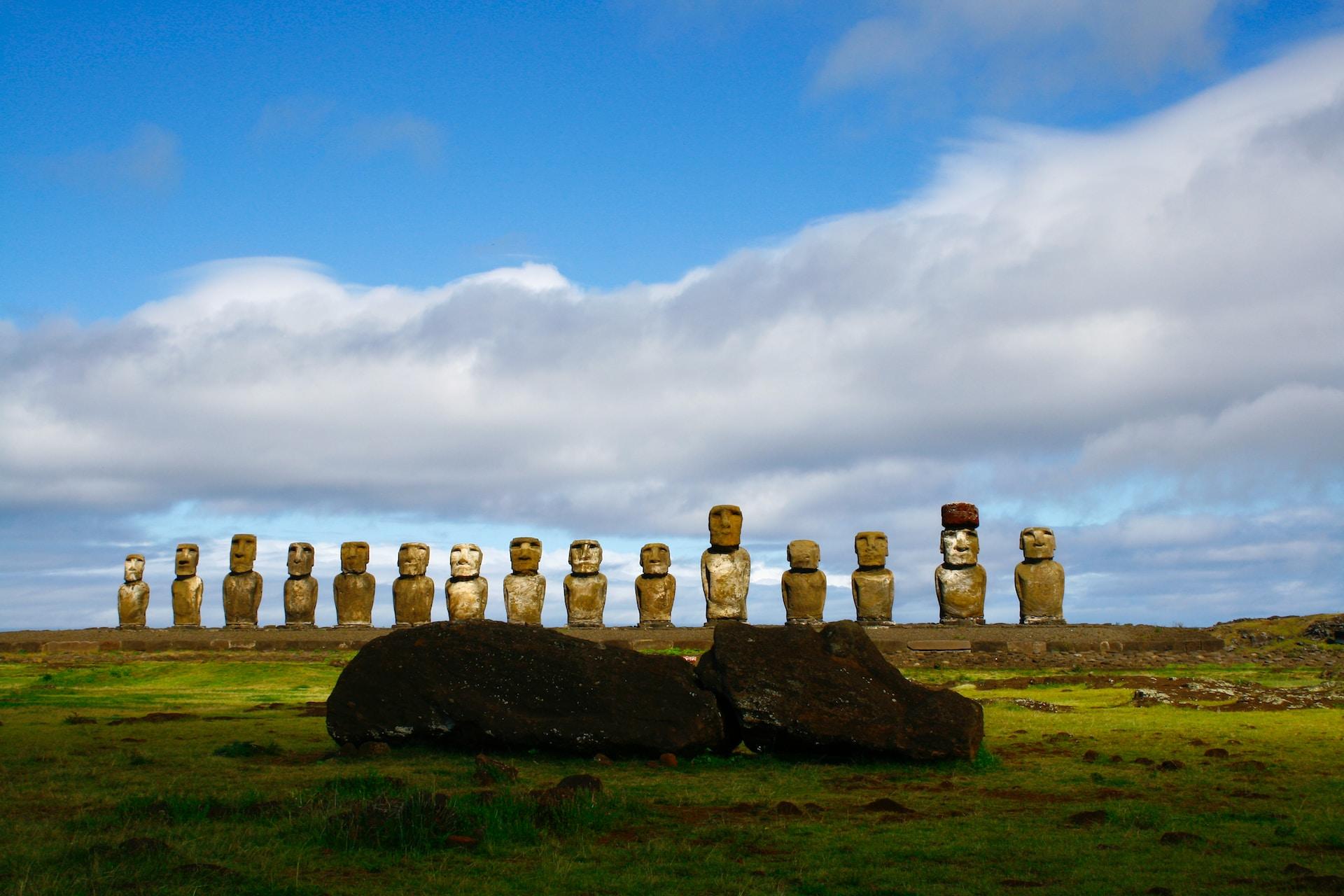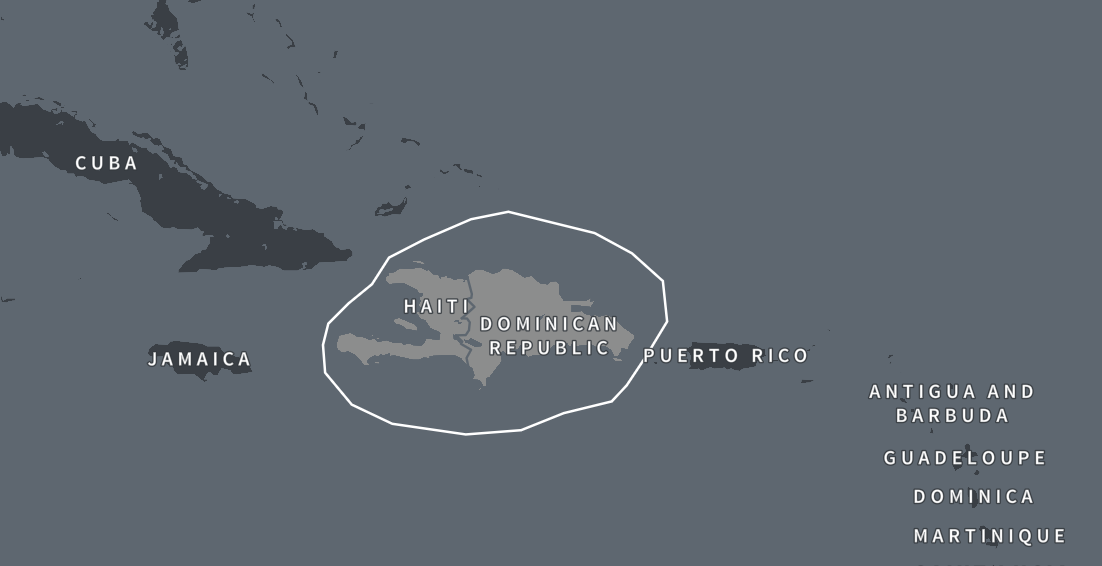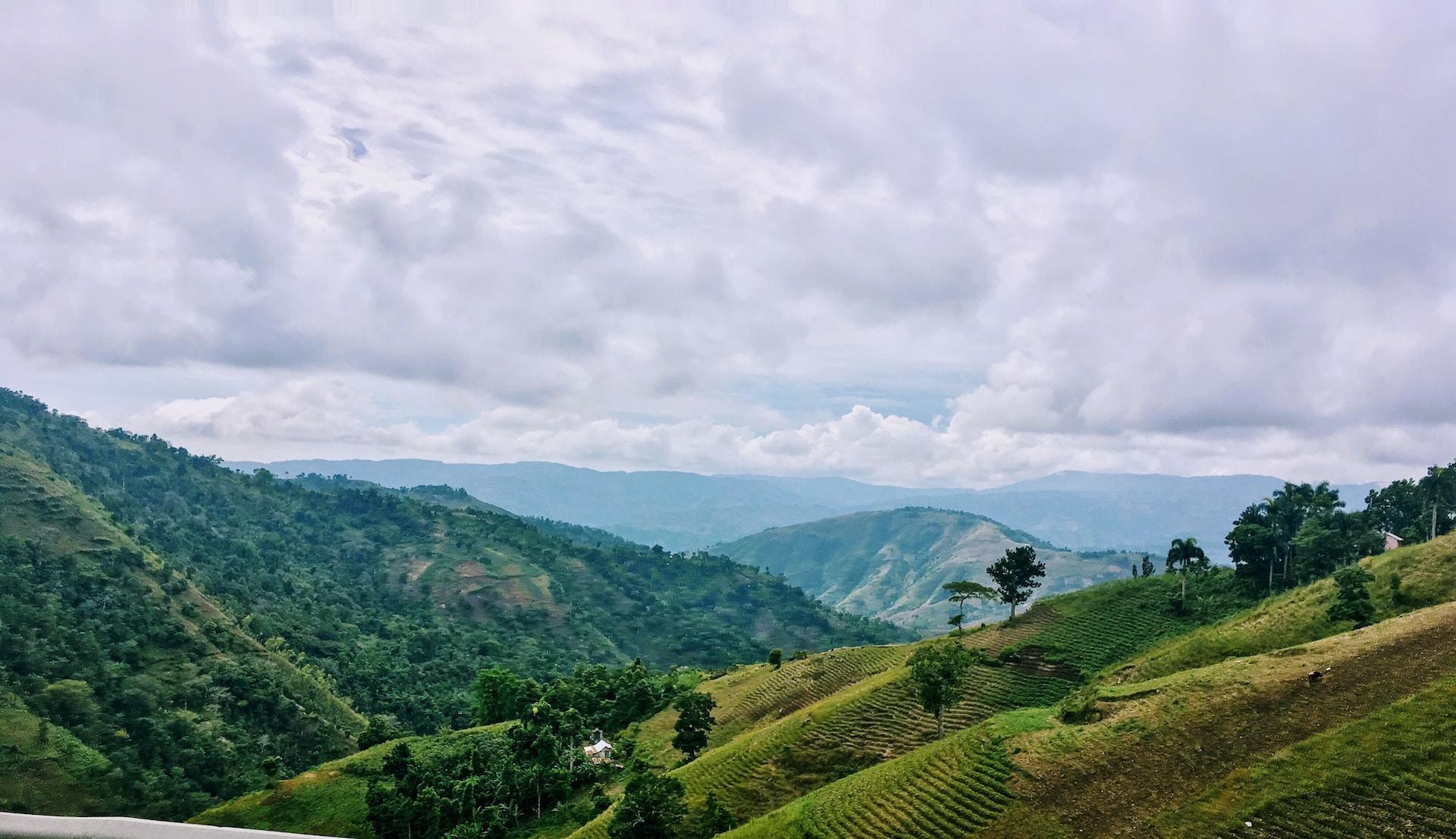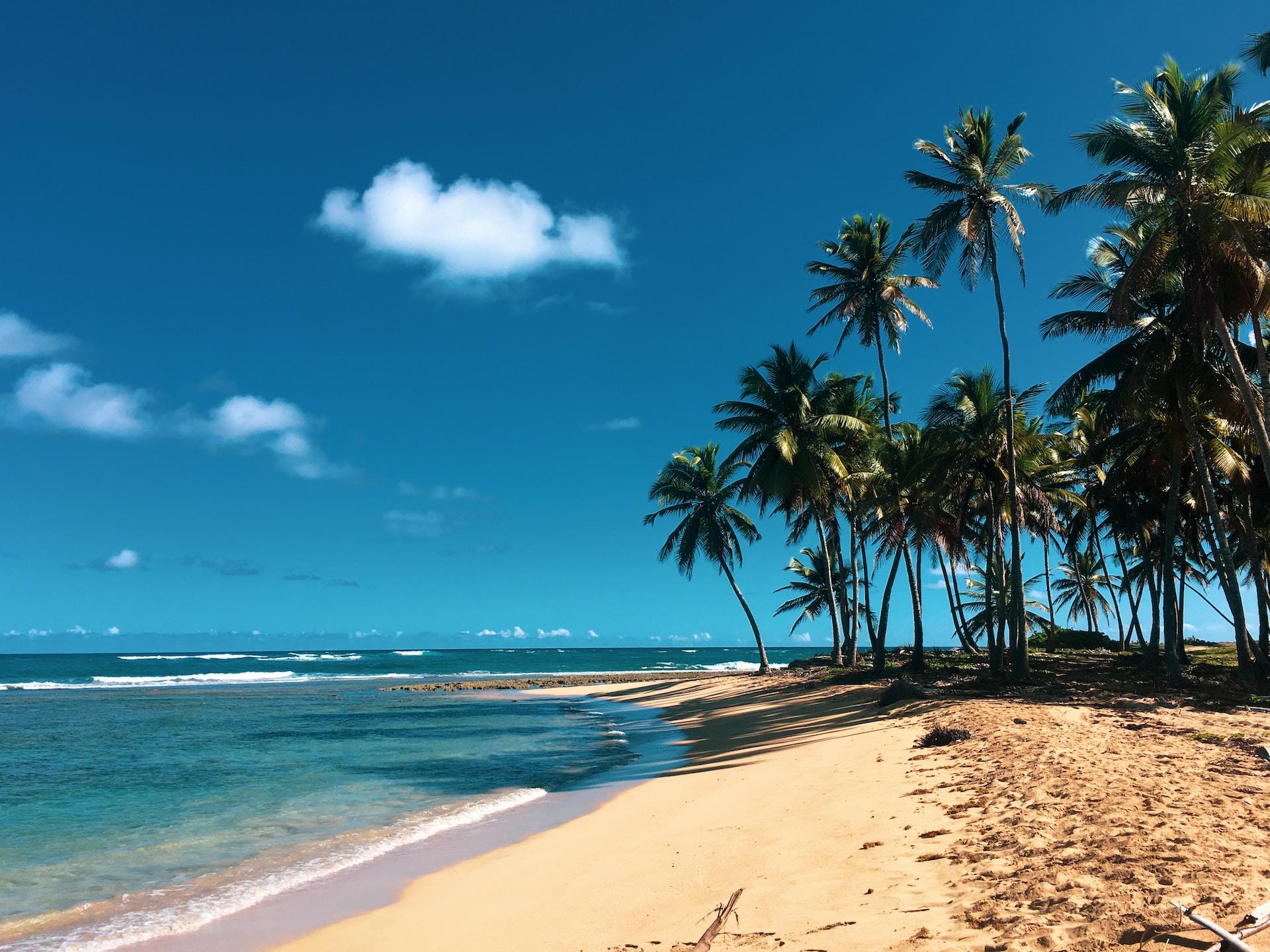What is Indigenous Americas-Haiti & Dominican Republic DNA Ethnicity on Ancestry?
In this article we will be looking more closely at the Indigenous Americas Haiti and Dominican Republic DNA region. We will look at where it is and who the indigenous people of that region were. So to find out more about your DNA ancestors of this region read on.
History of Humans in the Americas
The Land Bridge
Although there is no exact date for when humans first arrived in the Americas there are several prevailing theories. The most common one of course being the land bridge theory. During the last ice age between 19,000 – 8700 BC, sea levels were 100 feet below the modern-day levels. This was due to vast quantities of water being frozen in glacier form.
During that last ice age, the Bering sea as we know it today was actually a land bridge reaching all the way to Siberia. It is thought that around 14,000 years ago stone age hunters and gatherers followed game across this land bridge and became the first humans to settle within the Americas.
It is also believed that gradually these settlers then headed deeper into the Americas, traveling south in small groups. Due to the ongoing effects of the ice age these groups remained small because conditions were not conducive with large settlements or nomadic tribes.
Today's Indigenous peoples likely descend from a now-vanished ancient group known as the Paleo-Siberians. In DNA testing Indigenous Americas DNA has little in common with modern-day Siberians but in 2019 a 10,000 year old skeleton found in Siberia did show notable similarities to modern-day Native peoples in the Americas.
Traveling by Sea
There exist several theories whereby early indigenous people of the Americas may have interacted and bred with oceanic explorers prior to the arrival of Columbus. In DNA tests taken of inhabitants of Rapa Nui (Easter Island), these people showed small sections of Native American DNA.

Easter Island is over 2000 miles away from the closest contact with the Americas which would be the coast of Chile. The DNA suggests that these Easter Islanders had a Native American Ancestor from around 1280 – 1495 A.D. It is therefore likely these seafaring Polynesians made the trip to the Americas and some may have stayed.
Recent archaeological evidence also indicates that Vikings were present in the United States around the 11th century A.D. It is reasonable to assume there would be a possibility that some may have settled and assimilated into local tribes.
Indigenous Americas Haiti and Dominican Republic DNA Region
The Indigenous Americas Haiti and Dominican Republic DNA region is a very small area in the Caribbean that encompasses the Island on which both nations are found. It also covers some of the smaller coastal islands around the main island.

Indigenous Haiti History
The Taino are believed to have arrived on the region we know as Haiti at least 5,000 years ago from mainland South America. There is much discussion as to exactly where in South America the Taino first arose, some suggesting they may descend from groups in the Amazon basin while others believe they may have Andean roots.

This group was at one time widespread in the Caribbean with populations not only in Haiti but the Dominican Republic, Jamaica, Cuba, Puerto Rico and the Bahamas. They had an agricultural society and some experts suggest that they are an extinct people. There are however many people who identify as Taino today living in the region.
The Spanish
In December of 1492 Christopher Columbus arrived in the region we know as Haiti today and about 19 days later his famed ship the Santa Maria ran aground near modern day Cape Haitien. Columbus would leave behind 39 men because of this and they would establish the first Spanish settlement on the island La Navidad on Christmas Day 1492.
As was the norm anywhere the Spanish interacted with Indigenous peoples of the Americas disease was passed to the populace which would have devastating effects. Additionally the Spanish concept that natives of a land they have claimed for Spain can be used as slave labor.
Indigenous Dominican Republic History
As with Haiti the Taino became the dominant indigenous group around 5000 years ago and may have displaced some earlier inhabitants of the island when they did so. A once common group in the Caribbean the Guanahatabey may have been present when the Taino first arrived.
The Guanahatabey were a somewhat unknown group who were first encountered by Europeans on the island of Cuba but as a culture they quickly disappeared soon after leaving no real indication of where they may have originated.

During the 15 century the Taino would get a taste of their own medicine when the warlike Caribs started to arrive on the island. This group possibly came from the Orinoco river area of South America and started to spread through the Caribbean in the 12th century.
As the Dominican Republic and Haiti share a small island they suffered the same fate when it came to the Spanish. The island became known as Hispaniola and would later become the two nations we know today.
How Did You Inherit Indigenous Americas Haiti and Dominican Republic Region DNA?
It is important to note that due to the small number of original humans that likely crossed the land bridge and thousands of years of isolation, Indigenous DNA is very distinct. Over thousands of years it has changed enough however to pinpoint populations with common DNA such as the Indigenous Americas Haiti and Dominican Republic region.
As mentioned many individuals from South and Central America may have some Indigenous DNA based on intermarriage between early Spanish settlers and the local native groups such as the Tiano, Caribs and possibly the Guanahatabey.
Depending on how high your percentage of Indigenous Americas Haiti and Dominican Republic DNA is, its origins can vary. If you have a high percentage you may have a recent ancestor who was almost 100% Indigenous. Often if this is the case you would likely have some idea of who this was.
In the case of lower percentages of Native DNA, it might be an indication of a more distant unknown indigenous ancestor. In order to discover this connection, you may have to do some deep research to try and pinpoint at what point that DNA entered your family tree.
Final Thoughts
When Indigenous peoples are confined to a small island nation for thousands of years it will tend to create a very distinct DNA that will stand out in their ancestors for generations. This is certainly the case with the Haiti and Dominican Republic Indigenous Americas region.
A mixture of earlier tribes, the Taino and the Caribs, the indigenous peoples found by Columbus in 1492 would be related to some on the mainland and others in the Caribbean but would be unique enough to stand out genetically.
Those who have Indigenous Americas Haiti and Dominican Republic DNA likely have ancestors who were once part of the indigenous population of the island which contains these two small nations.
Link To or Reference This Page
We spent a lot of time downloading, cleaning, merging, and formatting the data that is shown on the site.
If you found the data or information on this page useful in your research, please use the tool below to properly cite or reference Name Census as the source. We appreciate your support!
-
<a href="https://namecensus.com/blog/what-is-indigenous-americas-haiti-dominican-republic-dna-ethnicity-on-ancestry/">What is Indigenous Americas-Haiti & Dominican Republic DNA Ethnicity on Ancestry?</a>
-
"What is Indigenous Americas-Haiti & Dominican Republic DNA Ethnicity on Ancestry?". NameCensus.com. Accessed on May 2, 2024. https://namecensus.com/blog/what-is-indigenous-americas-haiti-dominican-republic-dna-ethnicity-on-ancestry/.
-
"What is Indigenous Americas-Haiti & Dominican Republic DNA Ethnicity on Ancestry?". NameCensus.com, https://namecensus.com/blog/what-is-indigenous-americas-haiti-dominican-republic-dna-ethnicity-on-ancestry/. Accessed 2 May, 2024
-
What is Indigenous Americas-Haiti & Dominican Republic DNA Ethnicity on Ancestry?. NameCensus.com. Retrieved from https://namecensus.com/blog/what-is-indigenous-americas-haiti-dominican-republic-dna-ethnicity-on-ancestry/.
